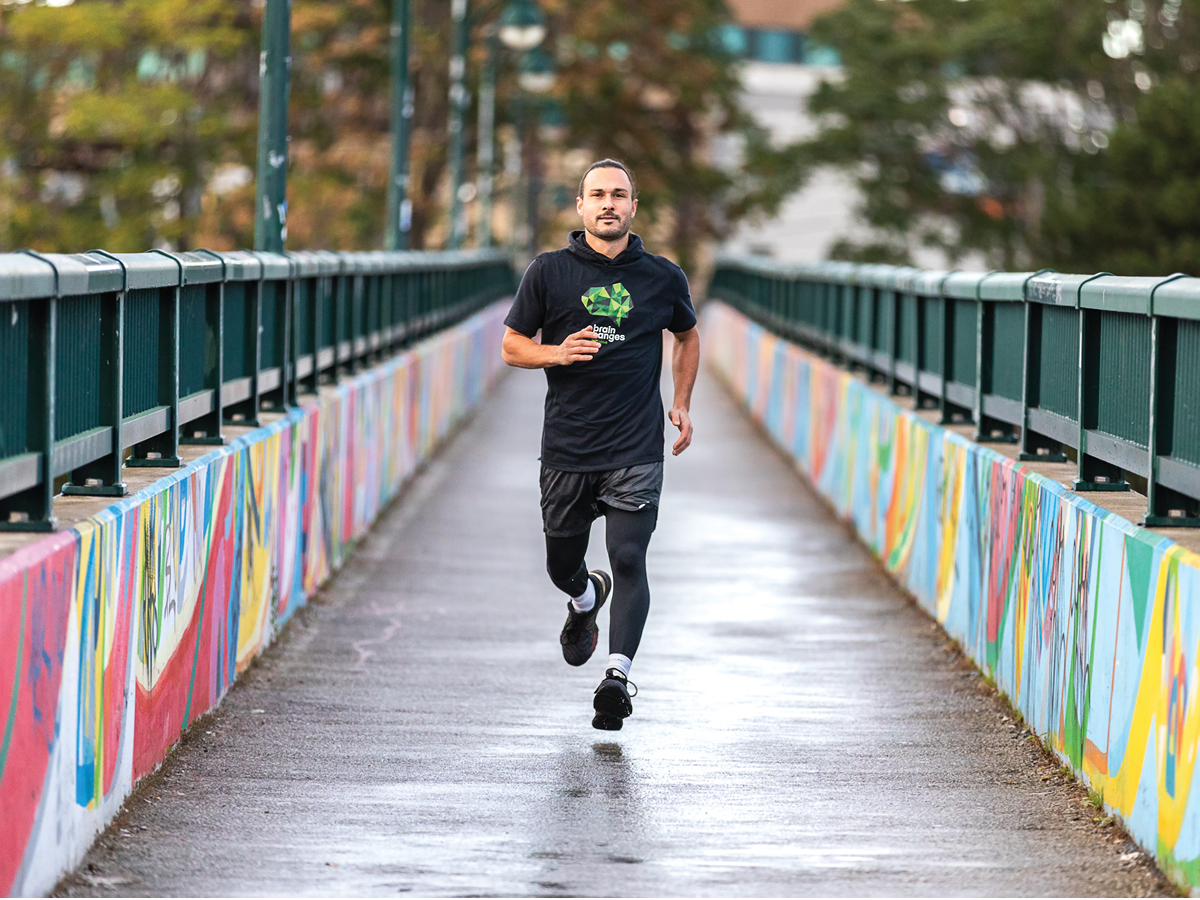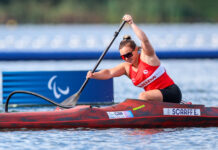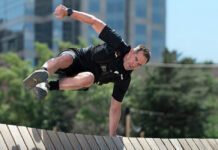Toronto’s Dr. Matthew Galati ran 30 kilometres in August and you’ll be gobsmacked to learn the journey he’s travelled to complete this distance.
While driving in the early morning of January 28, 2013 to his medical school class in Windsor, Ontario, Galati’s car hit black ice, careened off the road, spun out of control, and rolled up and down a tree. A bleed started in his head, and Galati fell into a three-day coma.
When he woke up, he couldn’t talk. “The prognosis was very poor,” says Galati, 31. “A score of consciousness is given at the time of the accident and I was deemed catastrophic.” The doctors thought he would need occupational therapy, physiotherapy, speech language pathology and a slew of other supports for the rest of his life. Recruited at the age of 14 to play semi-professional soccer in England and a second-year med student just days prior to the accident, people were now questioning whether he’d ever be able to cross the street on his own.
Many of his doctors had doubts and set limitations for his recovery. Says Galati: “My injury occurred at a time when there was little understanding of the brain’s ability to heal. The thought was that the brain cells you’re born with are what you die with, that there’s no real potential to create new brain cells or for the brain to reroute itself.”
But Galati believed in potential and limitless possibilities and diligently followed the rehab regimen at the Toronto Rehabilitation Institute. He was also enrolled in a study conducted by the Canada Research Chair (II) in traumatic brain injury by Dr. Robin Green, focusing on the effects of the intensification of rehab on recovery.
As his condition improved, he researched ways to ameliorate his recovery, learning the importance of creating new brain cells and then imprinting them with meaningful information. “Neuroplasticity is the ability of neural networks in the brain to adapt, heal, change, and create,” says Galati. “The more you do things over and over, the stronger those relevant connections become in your brain and the better you become at the task.”
To stimulate his mind, he began reviewing his notes from med school. He picked up the guitar to refine his fine motor control and played golf for gross motor control. He even played video games on his PlayStation to sharpen his problem-solving skills.
Because he had to relearn how to speak spontaneously in conversation, Galati’s rehab also involved socializing. Although he understood what they were saying and what he wanted to say in reply, he couldn’t put it into words. “I had to spell out everything in my brain before articulating and then speak in very short sentences,” he says.
The main pillar of his recovery was cognitive stimulation in combination with aerobic exercise. Whether it’s a healthy brain, an injured brain, or a mild developmental disability, aerobic activity increases the flow of blood and oxygen to the brain, creates new brain cells, and raises levels of neurohormones, all enhancing cognition, mood, and overall well-being. High impact sports like soccer would put Galati at risk, so he had to find other ways to get aerobic exercise. He started running five kilometres every morning, a new distance for the former high school sprinter.
Six months later, Galati scored higher on the neuropsych evaluation than the brain-injured population as well as the standardized population for the same age and education level. He returned to medical school at the University of Western Ontario and graduated in 2016.
Today, he has a family medical practice in Scarborough, Ontario, and he’s a hospitalist in rehab medicine at Runnymede Healthcare Centre. Building upon Green’s work, Galati is researching the effects and the optimal dose of aerobic exercise in combination with intensive cognitive exercise necessary to heal a brain.
In 2019, with the ongoing support of his family, Galati founded the non-profit organization Brain Changes Initiative (brainchanges on Instagram) which raises funds for traumatic brain injury research at Toronto Rehabilitation Institute and provides education and support for survivors and families. Every Sunday, 20 to 30 runners who are now mission ambassadors meet for a group run in Toronto, wearing black T-shirts with the mantra that Galati has tattooed on his arm:
“They said I couldn’t, so I did.”
Lead image by Denise Militzer
 IMPACT Magazine’s November Edition
IMPACT Magazine’s November Edition
RBC Olympic hopefuls Hayley Daniels, Sam Effah and Kate Wright as our inspiring cover athlete stories! Get prepared for winter running, making movement part of your workday, and exploring great hikes near Calgary and Vancouver.

















